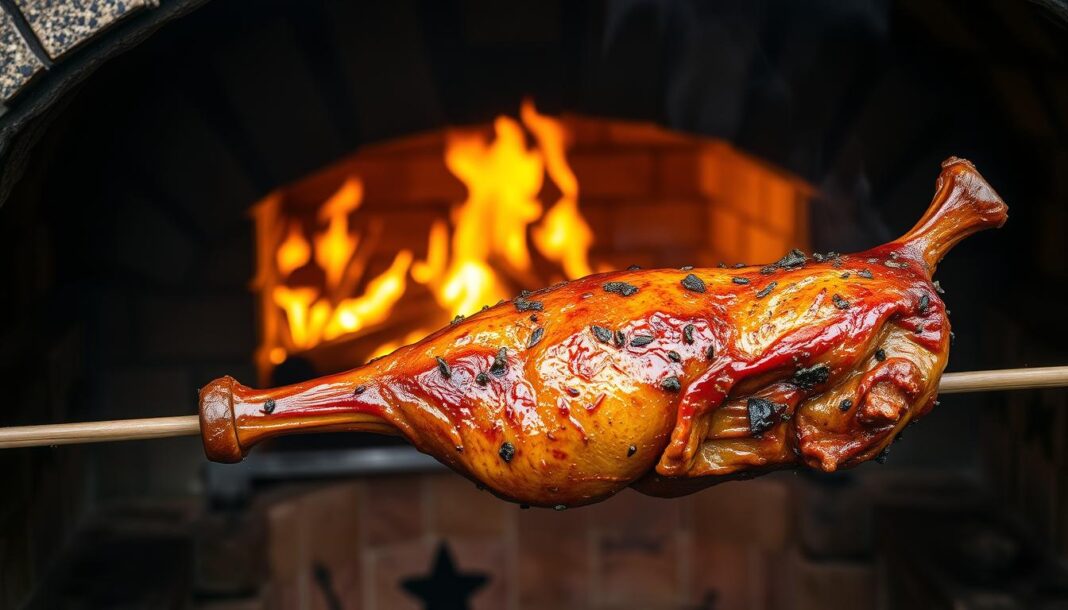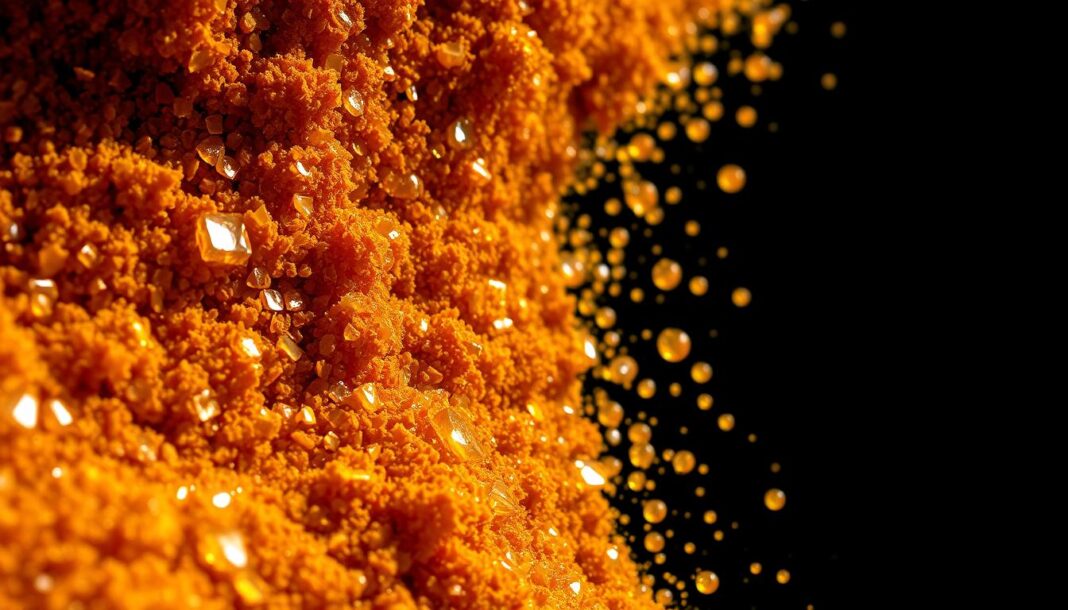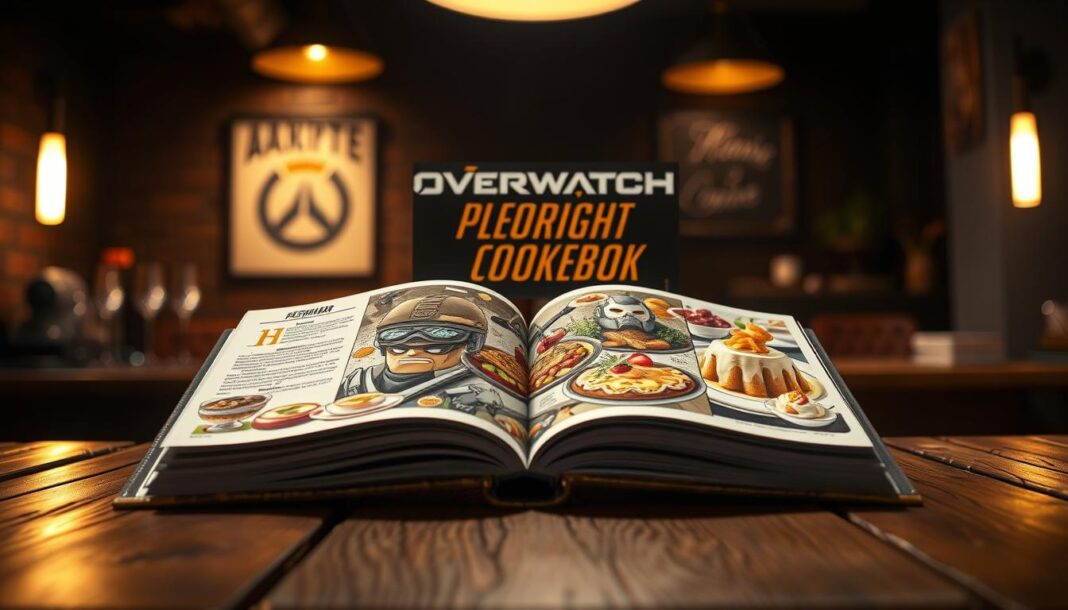Roasting venison to perfection is an art that requires precision and patience. At Historical Foods, we explore the traditional methods of cooking this lean game meat to bring out its rich, distinctive flavor.
With a history that spans centuries, cooking venison has evolved, incorporating both time-tested techniques and modern culinary science. Our comprehensive guide will walk you through the process, from selecting the right cut of meat to achieving the perfect internal temperature when you roast it in the oven.
By understanding the fundamentals of preparing this noble game meat, you’ll be able to avoid common pitfalls like dryness or gamey flavors, ensuring a deliciously roast venison every time.
Key Takeaways
- Master the art of roasting venison to perfection
- Understand the importance of selecting the right cut of meat
- Learn how to achieve the perfect internal temperature
- Avoid common pitfalls like dryness or gamey flavors
- Discover the benefits of using a recipe for venison
The Rich Heritage of Venison Cooking
The tradition of cooking venison dates back centuries, with various cultures developing unique methods to enhance its natural flavors. Venison has been a prized ingredient in many historical cuisines, valued for its lean profile and rich taste.
Venison in Historical Cuisine
Historically, venison was cooked using various methods, but roasting was particularly favored for its ability to bring out the meat’s natural flavors. We find that oven roasting, in particular, has been a longstanding technique for cooking venison.
Why Oven Roasting Enhances Venison Flavor
Oven roasting creates an ideal environment for cooking venison, allowing for precise temperature control that’s crucial for this lean meat. The dry heat helps develop a flavorful crust on the exterior while maintaining moisture within the roast. This method allows the natural flavors of venison to develop fully without being overwhelmed by smoke or char.
| Benefits of Oven Roasting | Description |
|---|---|
| Precise Temperature Control | Crucial for cooking lean venison |
| Flavorful Crust | Develops on the exterior while maintaining interior moisture |
| Natural Flavor Enhancement | Allows venison flavors to develop without smoke or char |
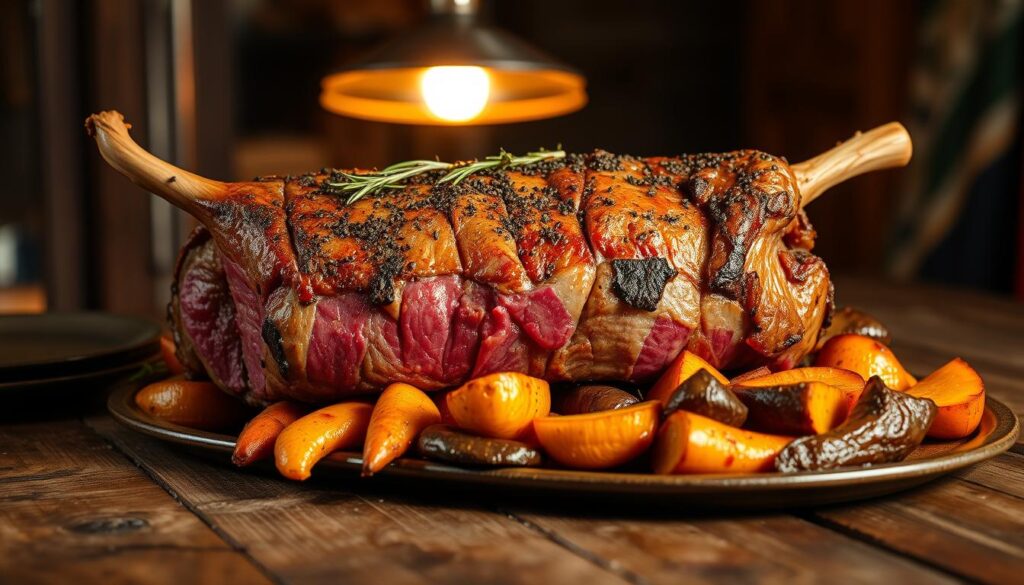
Preparing Your Venison for Roasting
Proper preparation is the foundation of a mouth-watering venison roast, and we’re here to guide you through it. The steps you take before roasting can significantly impact the final flavor and texture of the dish.
Selecting the Right Cut of Venison
Choosing the right cut of venison is crucial for a successful roast. Look for cuts that are well-suited for roasting, such as the loin or tenderloin. These cuts tend to be more tender and have less connective tissue, making them ideal for oven roasting.
Essential Seasonings and Marinades
Seasonings and marinades play a vital role in enhancing the flavor of your venison roast. We recommend using a mix of herbs and spices that complement the natural flavor of the venison. Applying a light coating of oil can help seasonings adhere and promote better browning.
Preparing the Meat Before Cooking
To prepare your venison for roasting, follow these key steps:
- Bring the venison to room temperature to ensure even cooking.
- Trim excess silverskin and fat, as venison fat can have strong flavors.
- Pat the meat dry with paper towels to create an ideal surface for browning.
- Consider trussing larger cuts with kitchen twine for uniform cooking.
- Allow seasoned venison to rest for 1-2 hours before roasting to deepen the flavors.

Venison in Oven: Perfect Roasting Techniques
To roast venison in the oven like a pro, you need to master a few essential techniques. We will guide you through the process, ensuring that your venison is cooked to perfection every time.
Searing for Maximum Flavor
Searing the venison before roasting is crucial for locking in flavors. A hot pan is essential for achieving a nice crust on the outside. We recommend using a skillet that can withstand high temperatures.
Temperature and Timing Guidelines
The key to perfectly roasted venison is understanding the right temperature and timing. The oven should be preheated to the right temperature, and the venison should be roasted for the appropriate amount of time based on its size and thickness.
| Venison Cut | Oven Temperature (°F) | Roasting Time (minutes) |
|---|---|---|
| Leg of Venison | 325 | 20-25 per pound |
| Rack of Venison | 375 | 15-20 per pound |
Monitoring Doneness with a Meat Thermometer
Using a meat thermometer is the most accurate way to check if your venison is cooked to your liking. Insert the thermometer into the center of the thickest part of the roast, avoiding any bone or fat. For medium-rare, the internal temperature should be around 130-135°F. Remember that the temperature will rise by 5-10 degrees during the resting period.
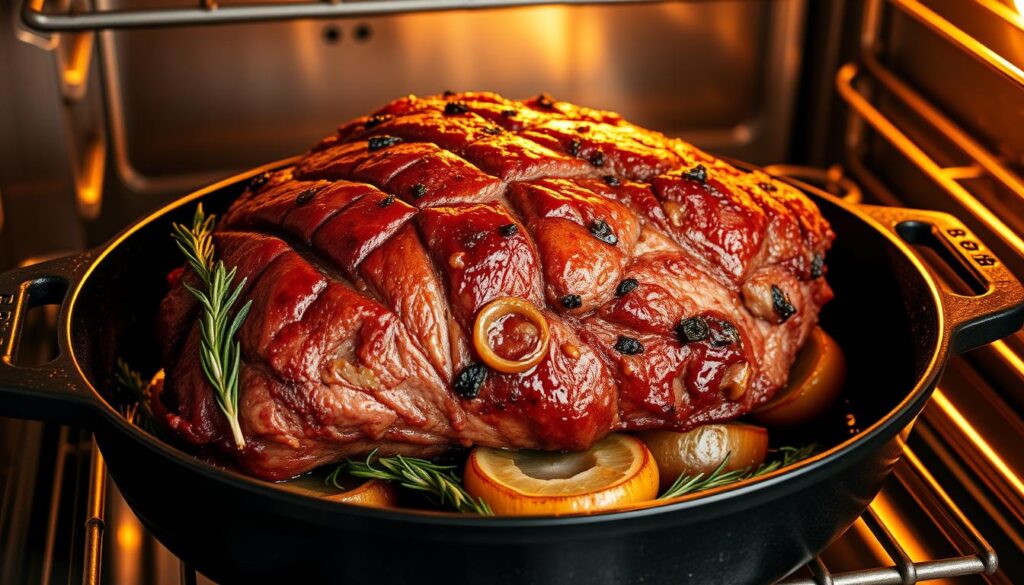
Complementary Sides and Sauces
The art of pairing venison with the perfect sides and sauces is crucial for a memorable meal. We find that the right accompaniments not only enhance the flavor but also contribute to a balanced nutritional profile.
Traditional Vegetable Pairings
Traditional European cuisine often pairs venison with root vegetables like carrots and parsnips, which are not only flavorful but also rich in fiber. Roasted or sautéed greens such as spinach or kale add a nutritious contrast to the rich venison.
Creating a Rich Venison Gravy
A rich venison gravy can be made by deglazing the roasting pan with red wine and then simmering it with some stock. This gravy is not only delicious but also complements the high protein content of the venison, making for a satisfying meal.
Wine and Beverage Pairings
When it comes to beverage pairings, full-bodied red wines like Syrah or Cabernet Sauvignon complement venison beautifully. For non-alcoholic options, rich beverages like black tea or tart fruit juices can stand up to venison’s robust character. Venison is also lower in calories compared to similar beef cuts, making it a healthier alternative.
Serving and Storing Your Roasted Venison
Roasting venison to perfection is just the beginning; serving and storing it properly is equally important. To achieve the best results, let the venison rest under foil for 15-20 minutes before slicing it against the grain into medium-thin portions. When planning servings, consider 6-8 ounces per person as a guideline. Leftover venison can be refrigerated for up to 3-4 days or frozen for up to 3 months. For reheating, use a gentle warming method, such as a 300-degree oven with a splash of stock or butter. Venison’s nutritional profile makes it an excellent choice, with high protein and low calories. Consider preparing complementary sauces in advance and storing them separately. Historical preservation methods like potting or smoking can also inspire modern serving ideas.
